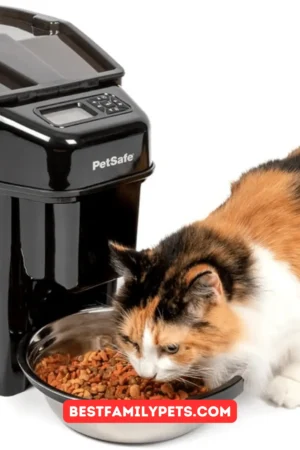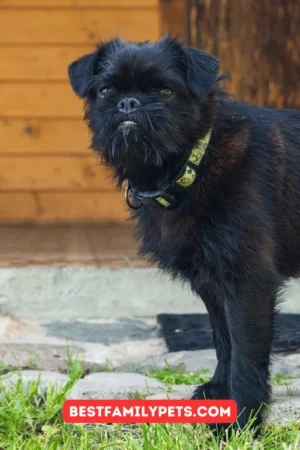Exploring Carbon Monoxide Poisoning in Dogs and Staying Safe
Keep your furry friend safe! Learn about carbon monoxide poisoning in dogs and discover essential tips to prevent it.
Carbon monoxide poisoning is a serious threat that can affect not only humans but also our furry friends. Dogs, like humans, are susceptible to the dangers of carbon monoxide (CO) and understanding the risks associated with it is essential for their safety and well-being. In this article, we will explore the causes, signs and symptoms, immediate actions to take, and preventive measures for carbon monoxide poisoning in dogs.
Carbon monoxide is a colorless and odorless gas that is produced by the incomplete combustion of fuels such as gasoline, wood, coal, and propane. When inhaled, it binds to hemoglobin in the bloodstream, reducing the blood’s ability to carry oxygen. This lack of oxygen can lead to serious health issues and, in severe cases, even death. Dogs can be exposed to carbon monoxide in various ways, including inhalation of car exhaust fumes, faulty heating systems, carbon monoxide leaks in the home, or spending time in enclosed spaces with fuel-burning appliances.
Causes of Carbon Monoxide Poisoning in Dogs
One of the primary causes of carbon monoxide poisoning in dogs is the inhalation of car exhaust fumes. Dogs left in a running car or in a closed garage with a running engine can quickly be exposed to high levels of carbon monoxide. Faulty heating systems, such as furnaces or water heaters, can also release carbon monoxide into the air, especially if they are not properly maintained or ventilated. Additionally, carbon monoxide leaks in the home, often caused by malfunctioning appliances or blocked vents, can pose a risk to both humans and pets. Dogs spending time in enclosed spaces with fuel-burning appliances, such as generators or camping stoves, are also at risk of carbon monoxide poisoning.
Here is a list of common causes of carbon monoxide poisoning in dogs:
- Improperly Ventilated Areas: Dogs can be exposed to carbon monoxide if they spend time in enclosed spaces with poor ventilation, such as basements, garages, or cars running in enclosed spaces.
- Faulty or Malfunctioning Heating Systems: Carbon monoxide poisoning can occur when heating systems, such as furnaces or water heaters, are not properly maintained or if there are leaks or malfunctions in the system.
- Blocked Chimneys or Flues: If chimneys or flues are obstructed or blocked, carbon monoxide can build up in the living space instead of being safely vented outside.
- Exhaust Fumes from Vehicles: Dogs left in running vehicles, particularly in enclosed spaces like a closed garage, can be exposed to high levels of carbon monoxide from the exhaust fumes.
- Generators and Power Equipment: Carbon monoxide poisoning can occur when dogs are exposed to exhaust fumes from generators, power tools, or other equipment that burn fuel.
- Propane or Gas Leaks: Leaks in propane or natural gas lines, appliances, or tanks can release carbon monoxide into the environment, posing a risk to dogs in the vicinity.
- Barbecues and Grills: Dogs near barbecues or grills that use charcoal, propane, or other fuel sources can be exposed to carbon monoxide if the equipment is used in an enclosed or poorly ventilated area.
- Fireplaces and Wood-Burning Stoves: Inadequate ventilation or improper use of fireplaces and wood-burning stoves can lead to the accumulation of carbon monoxide indoors.
It’s important to take precautions to prevent carbon monoxide poisoning in dogs by ensuring proper ventilation, regular maintenance of heating systems and appliances, and avoiding situations where dogs can be exposed to exhaust fumes or gas leaks. If you suspect carbon monoxide poisoning in your dog, seek veterinary attention immediately.
Signs and Symptoms of Carbon Monoxide Poisoning in Dogs
Recognizing the signs and symptoms of carbon monoxide poisoning in dogs is crucial for prompt action. Some common indicators include lethargy and weakness, difficulty breathing, vomiting and diarrhea, confusion and disorientation, and cherry-red gums and tongue. These symptoms may vary depending on the level and duration of exposure. If you notice any of these signs or suspect carbon monoxide poisoning, it is important to act quickly to ensure your dog’s safety.
Here is a list of signs and symptoms of carbon monoxide poisoning in dogs:
- Lethargy: Dogs affected by carbon monoxide poisoning may appear excessively tired or weak.
- Difficulty Breathing: Labored or rapid breathing, shortness of breath, or panting can be observed.
- Loss of Coordination: Dogs may have trouble maintaining balance, stumble, or have unsteady movements.
- Confusion or Disorientation: Carbon monoxide poisoning can cause dogs to appear confused, disoriented, or have difficulty recognizing familiar surroundings.
- Bright Red or Cherry Red Gums: One of the characteristic signs of carbon monoxide poisoning is the discoloration of the gums, which can turn bright red or cherry red.
- Vomiting: Dogs affected by carbon monoxide poisoning may experience episodes of vomiting.
- Seizures: Seizures or convulsions can occur as a result of carbon monoxide exposure.
- Collapse: In severe cases, dogs may collapse or become unconscious.
- Elevated Heart Rate: A rapid or irregular heartbeat can be a sign of carbon monoxide poisoning in dogs.
- Excessive Salivation: Dogs may drool excessively or have increased saliva production.
- Loss of Appetite: A decreased interest in food or a complete loss of appetite can be observed.
- Pale or Bluish Mucous Membranes: The gums, tongue, or other mucous membranes may appear pale or bluish due to oxygen deprivation.
If you suspect your dog has been exposed to carbon monoxide, it’s crucial to seek veterinary assistance immediately. Carbon monoxide poisoning is a medical emergency, and prompt treatment is necessary for the well-being of your pet.
Immediate Actions to Take if Suspected Carbon Monoxide Poisoning
If you suspect your dog is suffering from carbon monoxide poisoning, there are immediate actions you can take to help mitigate the situation. First and foremost, move the dog to a well-ventilated area with fresh air. This step is crucial in reducing further exposure to carbon monoxide. Next, contact your veterinarian or an emergency animal clinic immediately for professional guidance. They will provide you with instructions on what to do next, which may include administering first aid if necessary.
Here is a list of immediate actions to take if you suspect carbon monoxide poisoning:
- Remove the Dog from the Area: If you suspect carbon monoxide poisoning, immediately move the dog away from the source of exposure to fresh air. Take them outside or to an open, well-ventilated area.
- Ensure Your Safety: Be cautious and prioritize your safety while removing the dog. Do not enter a potentially dangerous area or put yourself at risk of exposure to carbon monoxide.
- Call for Emergency Assistance: Contact your veterinarian or the nearest emergency veterinary clinic immediately. Inform them about your suspicions of carbon monoxide poisoning and follow their instructions.
- Do Not Wait: Carbon monoxide poisoning is a medical emergency, and time is of the essence. Do not wait or attempt to treat your dog at home without professional guidance.
- Observe and Document Symptoms: While waiting for veterinary assistance, closely observe your dog’s symptoms and document them. Note any changes in behavior, breathing difficulties, coordination issues, or other concerning signs.
- Keep the Dog Calm and Comfortable: Help your dog stay calm and comfortable during this stressful situation. Provide reassurance and keep them in a quiet, safe environment.
- Do Not Administer Home Remedies: Avoid administering any home remedies or medications without veterinary guidance. Inappropriate treatments can worsen the situation or interfere with professional medical care.
- Follow Veterinary Instructions: Once you reach the veterinarian or emergency clinic, carefully follow their instructions. They will provide specific guidance on further evaluation, treatment, and supportive care for your dog.
Remember, early intervention is crucial in cases of carbon monoxide poisoning. It’s always best to seek professional veterinary assistance promptly.
Preventing Carbon Monoxide Poisoning in Dogs
Prevention is key when it comes to carbon monoxide poisoning. By taking a few precautionary measures, you can significantly reduce the risk to your furry companion. Regular maintenance of heating systems and appliances is essential to ensure they are functioning properly and not emitting dangerous levels of carbon monoxide. Installing carbon monoxide detectors in your home is another crucial step as they can alert you to any leaks or elevated levels of the gas. Proper ventilation in enclosed spaces, such as garages or basements, is vital to prevent the accumulation of carbon monoxide. It is also important to avoid leaving dogs in cars with the engine running, as this can quickly lead to carbon monoxide buildup. Finally, when camping or boating, be aware of the potential carbon monoxide risks associated with fuel-burning equipment and ensure proper ventilation.
Safety Tips for Dog Owners
As a responsible dog owner, there are additional safety tips you should keep in mind to protect your canine companion from carbon monoxide poisoning. Educate yourself about carbon monoxide, its sources, and its effects on both humans and pets. Keep emergency numbers, including your veterinarian’s contact information, handy in case of emergencies. Be vigilant about potential sources of carbon monoxide in and around your home, and regularly check your carbon monoxide detectors to ensure they are in working order.
Conclusion
Carbon monoxide poisoning is a serious risk for dogs, but with awareness and proper precautions, it can be prevented. Understanding the causes, signs, and symptoms of carbon monoxide poisoning is essential for the well-being of our four-legged friends. By taking proactive steps such as regular maintenance, installation of detectors, and ensuring proper ventilation, we can keep our dogs safe from this silent killer.
FAQs
Can carbon monoxide poisoning in dogs be fatal?
Yes, carbon monoxide poisoning can be fatal for dogs if not treated promptly.
Are certain dog breeds more susceptible to carbon monoxide poisoning?
All dogs are equally susceptible to carbon monoxide poisoning, regardless of breed.
Is it safe to leave my dog in the car with the air conditioner running?
No, it is not safe to leave your dog in a running car, even with the air conditioner on, as it can lead to carbon monoxide buildup.
Can carbon monoxide detectors detect low levels of the gas?
Yes, carbon monoxide detectors are designed to detect even low levels of the gas to ensure early detection and prevention.
Are there any long-term health effects for dogs exposed to carbon monoxide?
Prolonged exposure to carbon monoxide can lead to long-term health issues in dogs, including organ damage and neurological problems.
-

7 Essential Cleaning Tips for Pet Owners
-



How Long Do Clownfish Live | A Complete Guide
-
How to Effectively Clean Pet Dander from Your Air Ducts for a Healthier Home
-



The Importance of a Dog Leash
-



The 12 Best Dog Bowls of 2024 for Dachshunds: How to Choose the Right One
-



Review: PetSafe Simply Feed Automatic Feeder
-



Review: JW Pet Skid Stop Slow Feed Bowl
-



Review: Dogit Slow Feeder Dog Bowl
-



Review: Outward Hound Fun Feeder Slo Bowl
-



Review: NMN Products Raised Dog Bowls
-



Review: Pet Zone Adjustable Elevated Pet Feeder
-



Review: FOREYY Raised Pet Bowls for Small and Medium Dogs
-



Review: PetFusion Elevated Dog Bowls
-



Belgian Malinois Pitbull Mix: Loyal, Energetic & Smart
-



Overview of Small Belgian Dog Breeds
-



Small Dogs that Get along with Herding Malinois Dog
-



Overview of DNA Testing for Belgian Malinois Dogs
-



Adopting a Puppy/ What you need to know


















